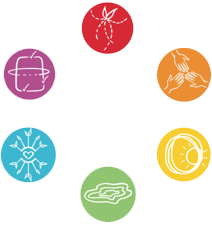
The Self Nurtured TeacherTM

The Self Nurtured TeacherTM

Raise your hand if you believe you are good at multi-tasking? OK…now put that hand down. Feb. 22 is single tasking day…who knew? I thought we could take a look at what it really means to multi-task, if we can do it well, and why we even want to.
In order to discuss single tasking, let’s first address multi-tasking beliefs and myths.
First off, multi-tasking is doing many independent tasks within a short period of time. In doing this it means we quickly switch from one task to another. For instance, think of you writing an email and your phone pings with an alert, so you switch from writing the email to responding to the ping. Then you return to the email, when someone walks into your office and wants to discuss _____, so you stop the email again and discuss, and then return to writing the email (that you started 15 minutes ago). This type of back and forth increases your cognitive demand. Meaning, had you just finished the email instead of responding to the other tasks that came up the demand on your brain would have been less.

Here’s the thing…your brain is really good at switching quickly. However, it also can only work on one task at a time. So, even though you think you’re rocking it with multi-tasking, your brain is only thinking about one thing at a time. That switching quickly between tasks is where the greater cognitive load starts to build.
In your mind you might think, wow…I crushed that. You might even say “I’m so good at multi-tasking!” Researchers say you lose 20% of overall productivity for EACH task you try to take on at once.
Women especially wear being able to multi-task as a badge of honor. I wonder why or where that aspiration came from. (I have some inferences.) Regardless, women are no better at multi-tasking than men. Women just do more. That doesn’t necessarily mean that they are doing it well or more effectively by trying to multi-task.
Let’s back it way up…where did the term multi-tasking come from? COMPUTERS
The word first appeared in 1965 in an IBM report. Here’s the definition according to pcmag.com “The running of two or more programs in one computer at the same time. The number of programs that can be effectively multitasked depends on the sophistication of the operating system, the speed of the CPU and the speeds and capacities of memory (RAM) and storage.”
How many of you have had too many tabs open on your computer to where it crashes and needs to restart? It’s no wonder why people, especially women, are exhausted. Our bodies and brains are not meant to go at this pace and expect to feel well. And in addition, the work produced isn’t typically the greatest quality.
So, what’s the answer? Single Tasking
Single tasking is doing one task/activity at a time with few distractions and interruptions. Reading this is like a ‘duh’ moment, and yet how many people can stay focused on one task? There are many distractions, and your phone is more than likely number 1. The dopamine hit you get each time you check your phone, respond to a ping, etc has many people completely unaware of how much their phone is keeping them in multi-tasking mode.

Single tasking can help you in all 6 areas in your life: Physical, social, spiritual, your environment, emotional, and professional. Part of taking care of yourself is managing your energy. Managing your energy happens in how you take care of your physical self, your thoughts and emotions about work and productivity, and how you set up your environment.
When people schedule their days with single task blocks of time, they have lower stress levels. One main reason for this is because when you’re multi-tasking and your brain is switching at lightning speeds, it creates a feeling of being behind, which equates to stress. When you have physical or emotional stress, your adrenal glands produce more cortisol to manage that response. If this becomes a chronic cycle, serious health risks can emerge. And don’t I know it…I have Addison’s Disease which means I produce NO cortisol on my own. If you want to hear more about my story, check out these podcasts that highlight my journey: The Transformation Show Podcast OR Teacher Renewed Podcast
Some other benefits of Single Tasking: (source: Power of Positivity)
Assuming you want to reduce stress, create the type of consistent energy that helps you live your best life, and improve your overall wellness, I’m going to give you some steps and tips to try moving from multi-tasking to single tasking.

First and foremost: Learn to LET GO! Let go of the idea that more is more. Let go of expectations that you think others have, or the ones you create. Ask yourself when you find yourself spinning with all the things you ‘need’ to do: Is this necessary to the outcome right now?
Here is a simple way to get started:
Want to know more about how to plan for your energy during the day? Grab my FREE Manage Your Energy Guide and Mini-Workshop here: Energy Guide & Planning Tool